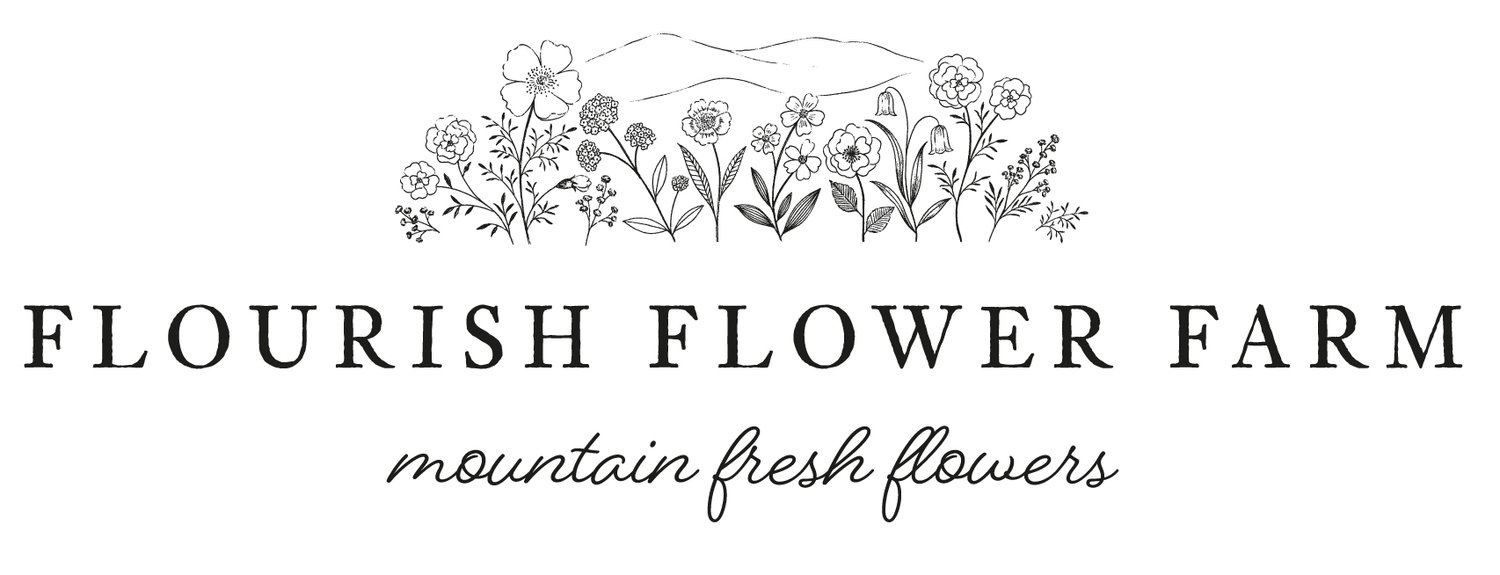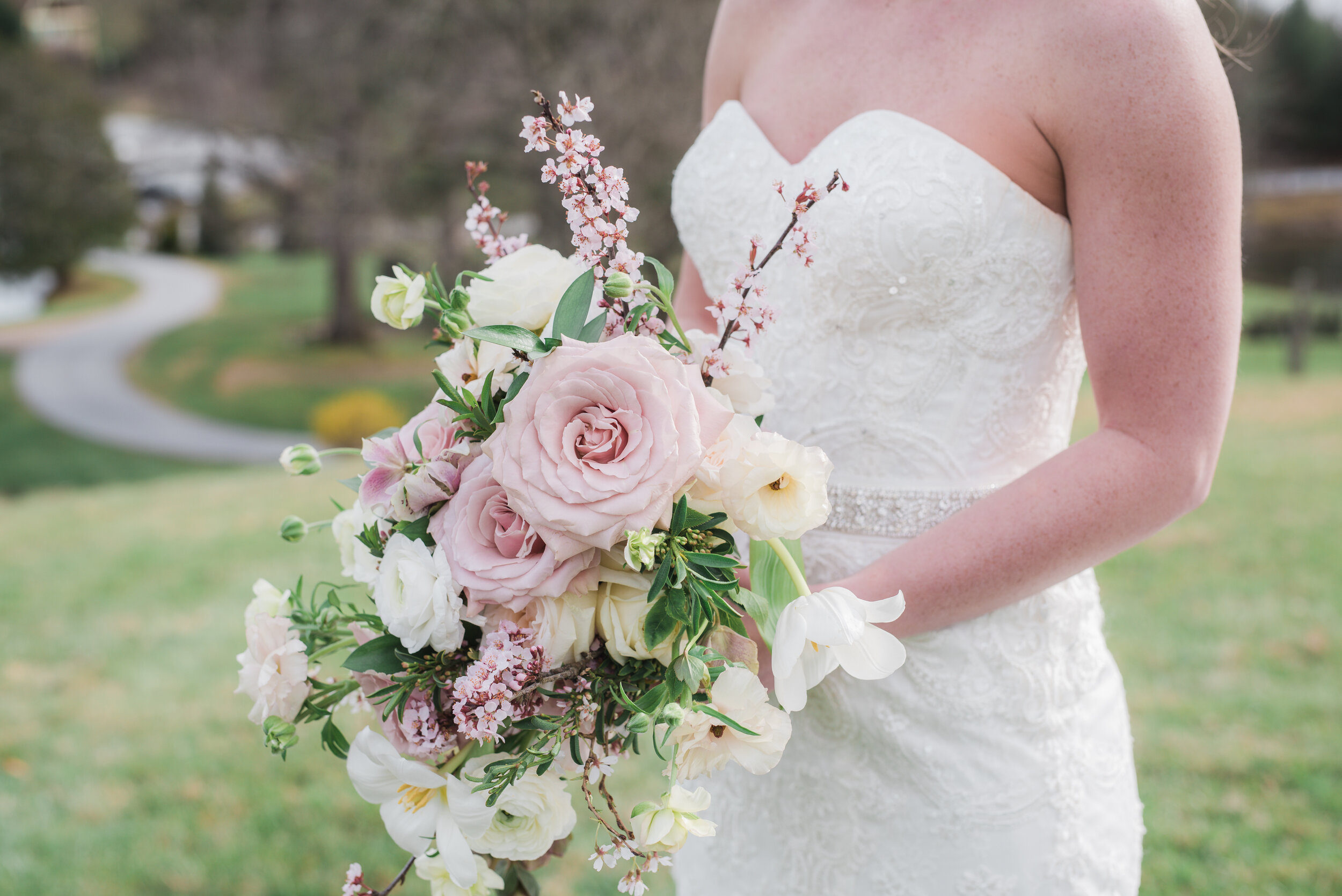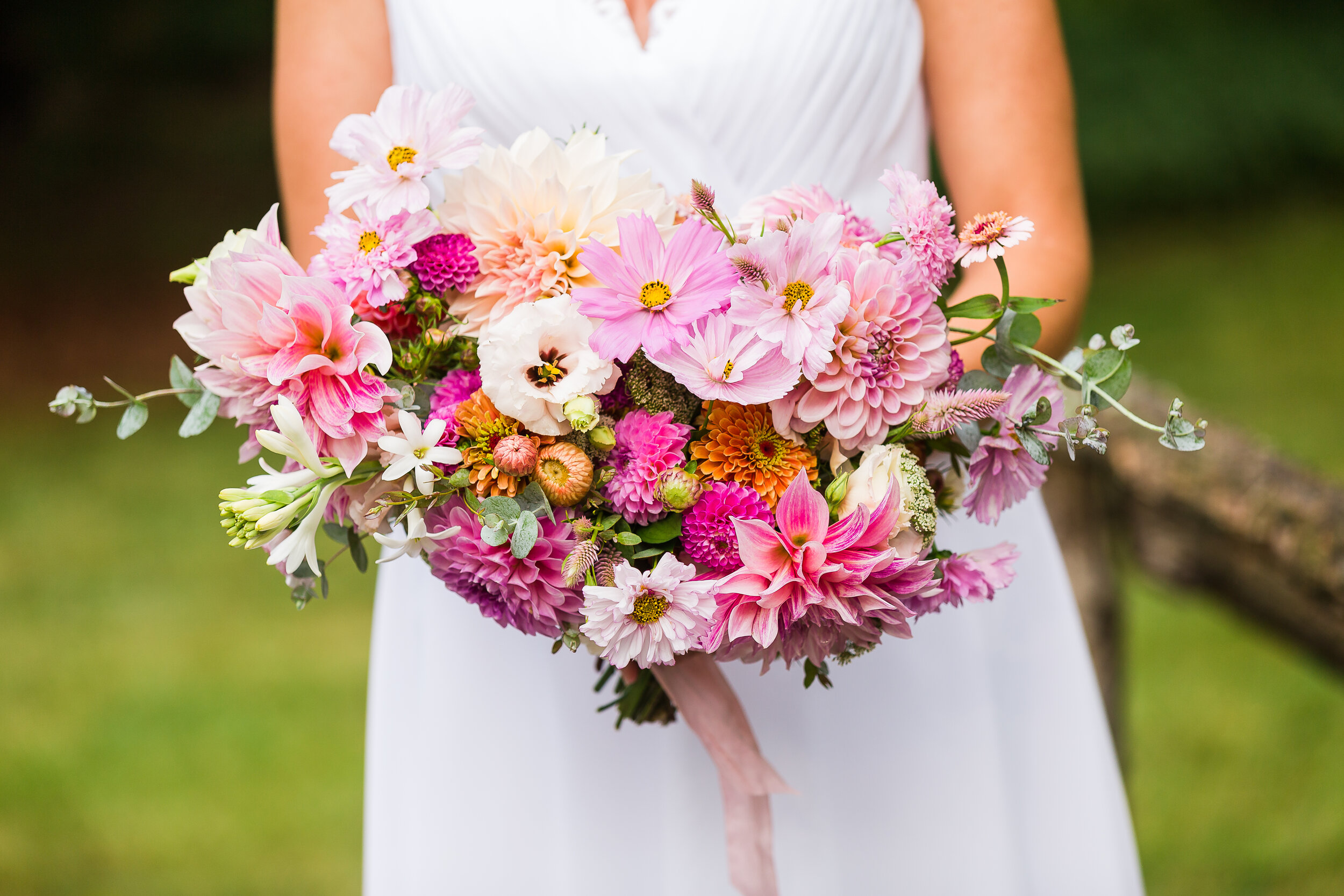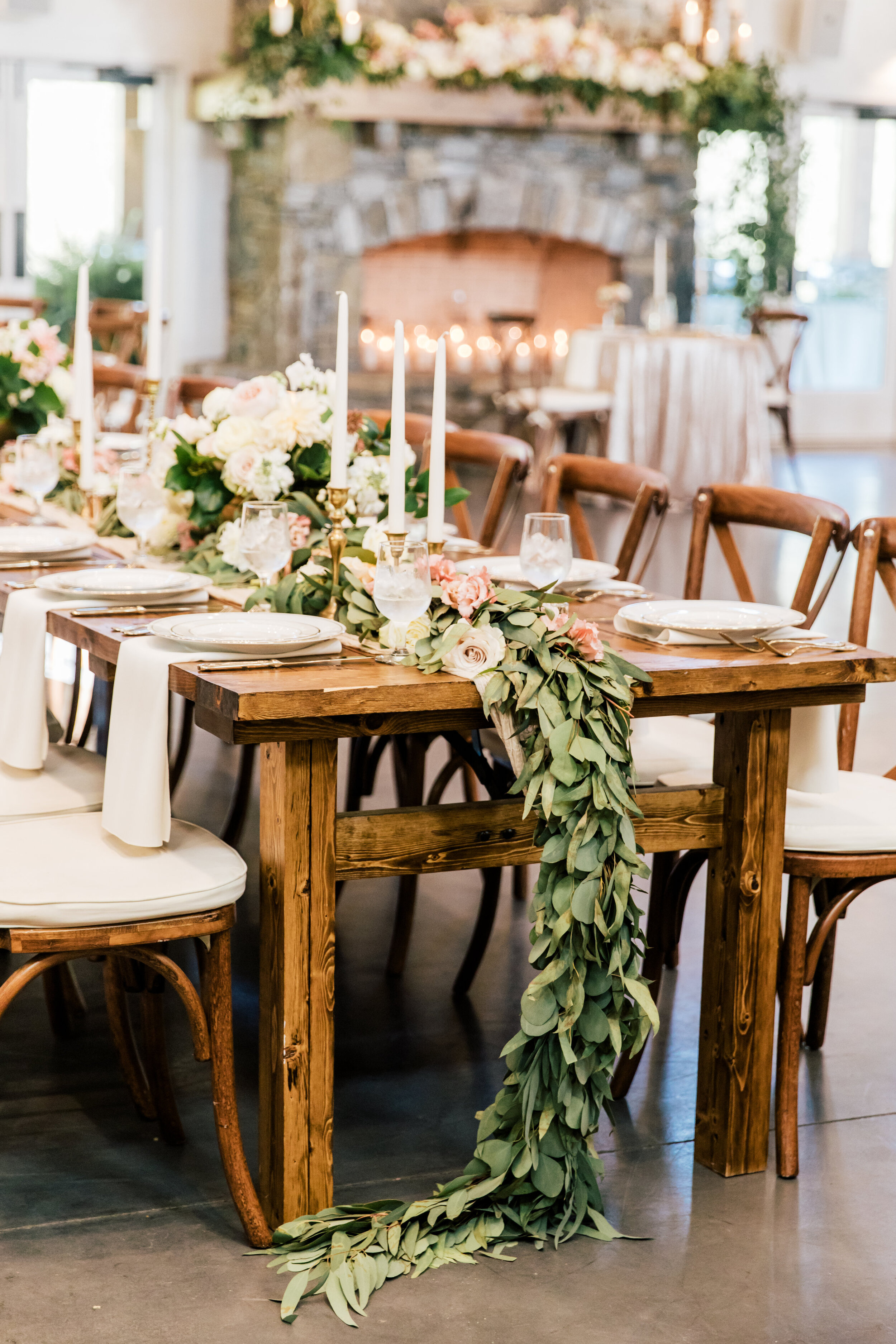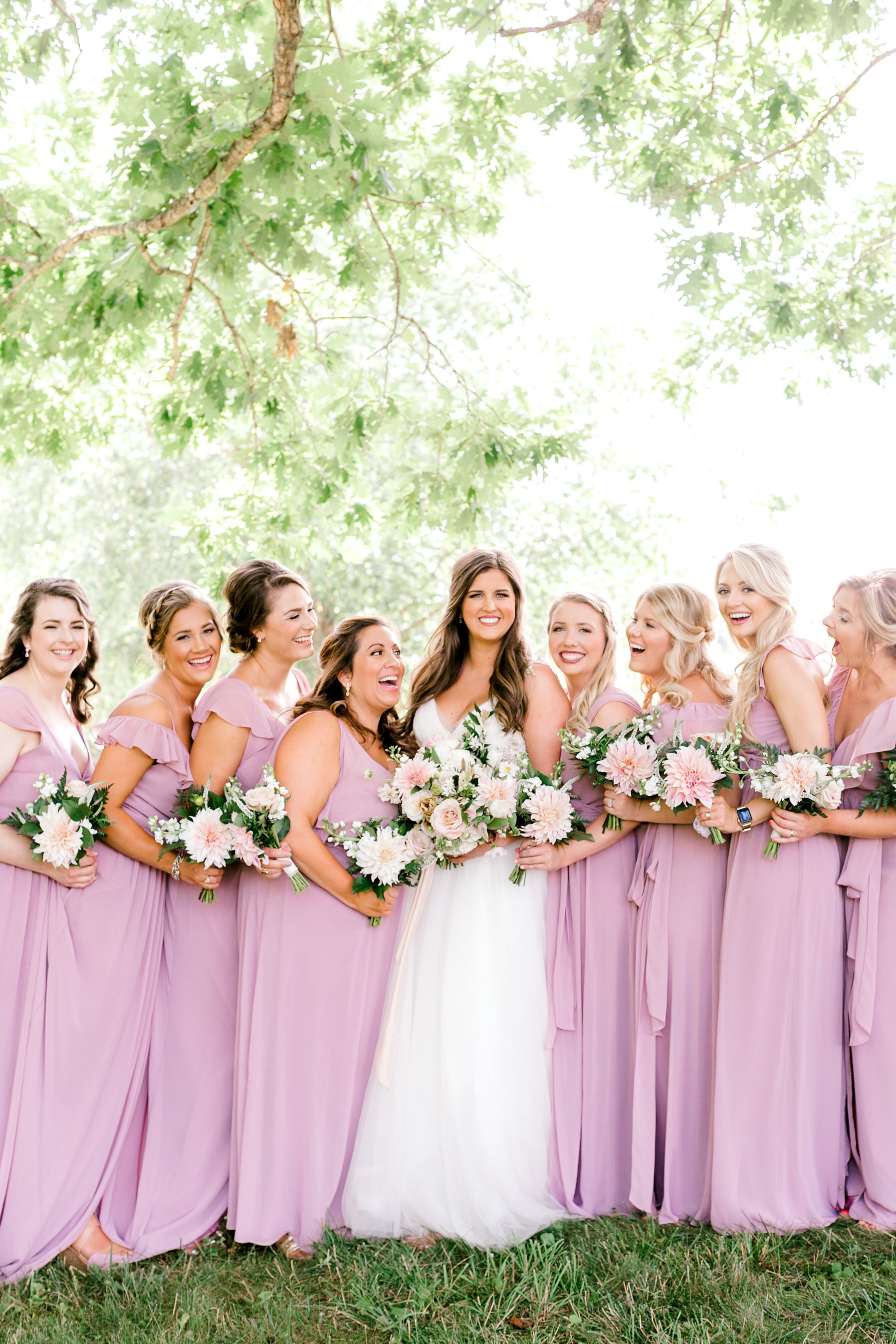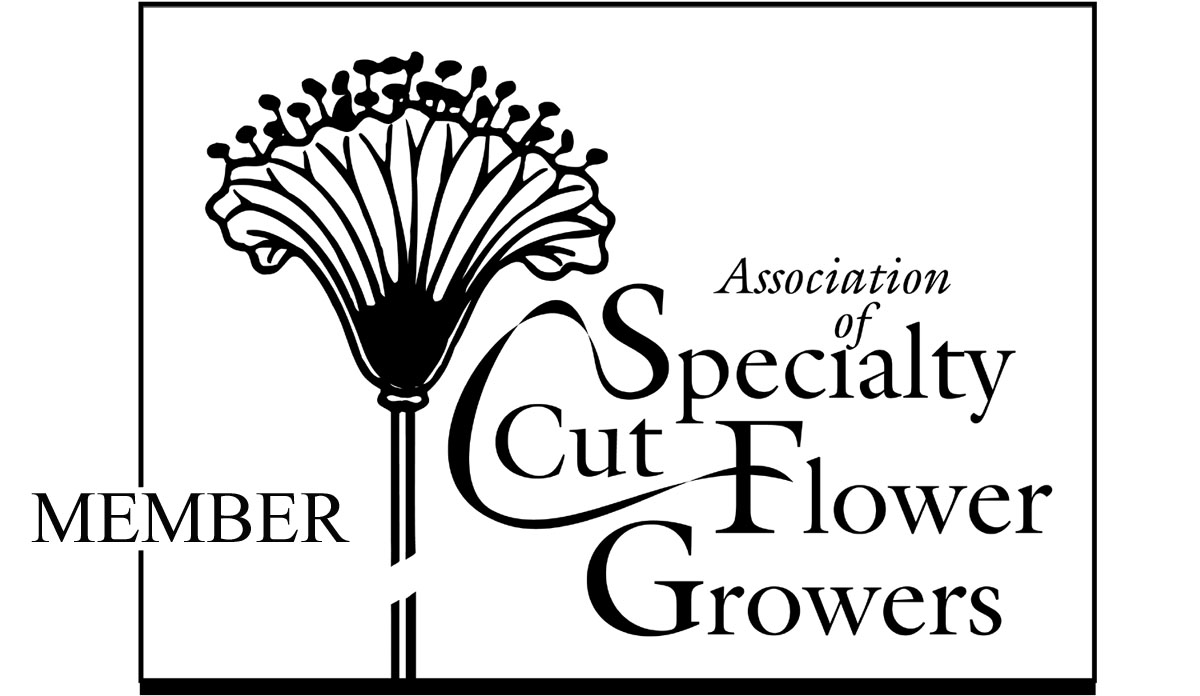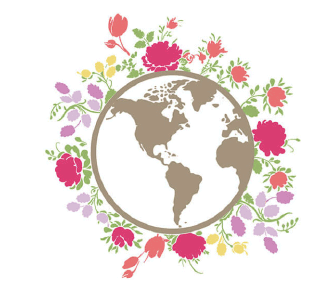Budgeting for Wedding Florals: Tips for maximizing your floral budget
/Why are wedding flowers so expensive? This is a question that gets asked often and I understand, weddings are a big investment. Floral design is a profession, not a hobby, and I promise that florists do not see the word “wedding” and immediately tack on the extra dollar signs. There is a lot of work that goes into creating beautiful flowers for a wedding and it is my hope to shed a little light on this. It is true that anyone can put flowers in a vase and because flowers are inherently beautiful, the end result generally ends up looking nice. However, there is a difference between putting flowers in a vase and in designing flowers. Truly pleasing floral design takes a talented professional, high quality product and lots of time and planning.
In case you are curious, I’d like to share a basic run down of what is involved in designing flowers for a wedding. First, I want to acknowledge that every job is difficult and complicated and I’m sharing this purely for the sake of education. Florists across the country are asked if we can lessen the cost of our services while still providing essentially the same end result. I believe that couples are interested in our designs because of the quality of work seen in our portfolio, and scaling back or using cheaper flowers will not allow us to provide that same level of service, thus potentially disappointing our clients (a total lose-lose situation). I also want to acknowledge that information this comes from my own experience in the industry and from the experiences of close flower friends who have been in the industry far longer than I.
What goes into being a wedding florist?
Our work begins the moment someone inquires about our services. Before someone even hires us, we spend several hours learning about a couple’s vision for their wedding day, creating a custom proposal + inspiration board and going back-and-forth to get the floral plan just right. Writing emails (on average 20 to 100’s of emails are exchanged throughout the planning process), having an in-person or phone consultation, visiting the venue and meeting with a planner takes many hours of time that must be accounted for in our pricing.
Once we book a client, we plan what flowers to use and how those will blend together to create balanced arrangements and we create a custom color palette. At Flourish, we do not use pre-fixed recipes and every single wedding is completely custom to each client. We reserve flowers from our farm’s inventory (and this doesn’t even cover growing the flowers, but the bottom line is that farm-grown flowers are not cheaper. It takes a lot of time and money to grow high quality flowers!) and we also order them from other local growers and a floral wholesaler as needed. The planning and ordering process takes many hours and often days. Flowers and greenery are highly perishable and 10% loss is standard, so that must be accounted for too.
We maintain an inventory of vases and vessels that all need to be kept clean, in good condition and be stored. A few days before the wedding, we harvest the flowers from the farm, pick them up from other growers and from the wholesaler. We process the flowers, make sure they are properly hydrated and handle them to make sure they are the perfect stage of openness for the wedding day – no one wants a droopy dahlia or a peony that is still in tight bud! We start designing 2-3 days before the wedding, depending on the size of the wedding. Knowing how to handle the flowers, how to keep them alive and looking their best, how to organize which arrangements to design when, how to manage a skilled team and also how to actually create gorgeous designs takes years of practice and professional development.
On the day of the actual wedding, we carefully (and I mean ever so carefully!) pack the vehicle for transport and spend all day on ladders, carrying buckets, bending, squatting and standing while we make everything look perfect. And then we come back to the venue late at night to clean up. The following day we clean our studios, wash buckets and clean vases. It is such a labor of love and when all these pieces come together, we create magic and elevate your wedding day with beautiful florals.
Hopefully this provides a little more insight into why floral designs are not inexpensive, especially when hiring a seasoned professional. I can assure you that there are plenty of “florists” who DIY-ed their own flowers or flowers for a friend and decided to offer services as a florist… but they have no actual industry or professional experience. Their prices are often so low because they do not know how to price correctly and it makes the professionals’ prices seem out of range, when its actually the other way around.
10 tips for maximizing your floral budget
1. Set appropriate expectations. Sadly there is a huge disconnect between Pinterest and reality (for most of us anyhow). Many of the photos on Pinterest are from inspirational photo shoots where vendors come together to create a fake wedding. These are not actual weddings with actual budgets, the labor from all vendors is free and we tend to design things that are more over-the-top than the average wedding in hopes of getting the shoot published. The other thing about Pinterest is that many images reflect weddings where the floral budgets are well over $25k. My advice is instead of searching Pinterest for inspiration, look a florist’s portfolio or online gallery. This should give you an idea of what type of work they are capable of creating for a real wedding.
2. Choose pieces that make the most impact and prioritize. Think about what is important to you: are you dreaming of a lush floral arbor? If so, prioritize that in your budget. Think about what will be photographed the most (usually the couple themselves and the ceremony site), where your guests spend the most time (standing at cocktail tables and sitting at the dining tables), and what photos you are likely to have framed after the wedding. When budgeting and prioritizing the first things that I always recommend my couples cut from the plan are aisle markers, aisle petals and extra arrangements for the bar or in the restrooms. These pieces add up quickly and do not make enough of an impact to justify the extra cost. Reuse bridesmaid bouquets for the bar and restrooms.
3. Have a small wedding party. Large wedding parties are quickest way to rack up expenses, and not just when it comes to florals. Bridesmaid bouquets typically cost $95-125 and when you multiply that times 10 maids, it can quickly blow up the budget. Many couples ask about repurposing bridesmaid bouquets as centerpieces for dining tables, which is a great idea, but my advice is to go with larger bridesmaid bouquets so that they make more of an impact when repurposed onto the tables. A $95 bridesmaid bouquet will get lost on a 60” round table.
4. Don’t skimp on the bridal bouquet. The bridal bouquet is one of the most photographed aspects of the entire day and has more “face time” than any other piece. Seeing a bride carry a poorly constructed bouquet or one filled with cheap filler flowers and only a handful of unique blooms makes me want to cry. Bridal bouquets can be dried, certain flowers can be snipped out and pressed and there are all sorts of other special ways to preserve it (check out how the Altarnative hand dyes garments like silk robes with a bride’s bouquet - its incredible!).
5. Have a variety of styles and sizes for dining table centerpieces. I encourage my clients to choose 2-3 styles of dining table centerpieces because it not only adds interest and depth to the space, it also allows us to design centerpieces within a range of price points. I suggest 1/3 tall elevated arrangements (which are typically the most expensive), 1/3 of a lush arrangement in a vase (about half the cost of the elevated) and the final 1/3 as a gathering of candles (about 1/3 the cost of the arrangement in a vase).
6. Steer clear of garlands. Lush garlands have gained popularity in the past few years, but are one of the least economical design styles. Garlands require a huge amount of product (flowers and greenery) and are also extremely labor intensive. A full greenery garland with flowers for a 15’ long table can cost the same as 2-3 lush arrangements in vases.
7. Large installations add up quickly. Greenery hanging from chandeliers and lush ceremony arbors can create a huge visual impact on your wedding day; be ready to dedicate a large portion of your budget to accommodate them. Installations require lots of labor, hours of designing on-site and take a large amount of product to create. Because we cannot design these pieces ahead of the wedding day, we need to hire extra people to help us on-site and we must account for the additional risk of working on tall ladders and lifts. Large installations also take lots of extra planning and preparation to be sure our team is ready to execute the design efficiently and beautifully on the wedding day. All of this work it totally worth is, but ends up adding more to the budget.
8. Greenery is not cheaper than flowers. Unfortunately it’s a misconception that greenery is not as expensive as flowers, when in fact bunches of nice greenery cost almost the same amount as bunches of flowers. It is true that there is some very inexpensive greenery to be had, but a centerpiece with loads greenery and just a few blooms will not give you the look that you’re hoping for. Trust me. There are loads of creative ideas for non-floral centerpieces if lush floral centerpieces are a budget-buster.
9. Choose in-season flowers. If you have your heart set on peonies, plan your wedding for late May or June. If you love dahlias, get married in the summer or fall. Buying flowers out of their normal season is often possible, but it comes with a cost; plan to spend at least twice as much. For example, a bunch of ranunculus costs about $18 wholesale in April, but the same bunch is $30 in October. The floral industry standard for marking up flowers is 3x (to account for all the labor, time and planning that I mentioned above) so the cost of out of season ranunculus is astronomical.
10. Give your designer creative freedom. If you allow your florist some creative freedom with the exact varieties of flowers, the end result will be more beautiful and cost-effective. We know that ranunculus are difficult, if not impossible, to find in September, but certain varieties of cosmos can give the same romantic, fluttery look. My absolute best work as a designer occurs when a client gives me a broad preference for a color palette and allows me the freedom to choose the exact shades and tones of the flowers.
Here’s the thing with flowers: you get what you pay for. Hiring an experienced florist will cost more than hiring a rookie, but the overall quality, experience and the end result will far exceed your expectations. I promise. Trust your floral designer’s expertise when it comes to flower choices, color palettes and getting the most bang for your buck. This is what we do for a living and you won’t find a more passionate group of professionals who are committed to making your wedding day beautiful.
Do you have any tips for getting the most of your wedding flowers? Share below in the comments!
xo Niki
